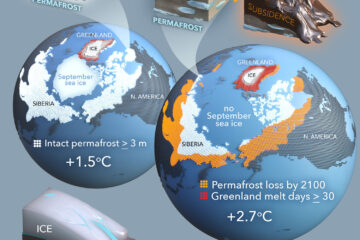Importance of lateral flux and its percolation depth on organic carbon export in Arctic tundra soil: Implications from a soil leaching experiment
Temperature rise in the Arctic is causing deepening of active layers and resulting in the mobilization of deep permafrost dissolved organic matter (DOM). However, the mechanisms of DOM mobilization from Arctic soils, especially upper soil horizons which are drained most frequently through a year, are poorly understood. Here we conducted a short-term leaching experiment on surface and deep organic active layer soils, from the Yukon River basin, to examine the effects of DOM transport on bulk and molecular characteristics. Our data showed a net release of DOM from surface soils equal to an average of 5% of soil carbon. Conversely, deep soils percolated with surface leachates retained up to 27% of bulk DOM while releasing fluorescent components (up to 107%), indicating selective release of aromatic components (e.g., lignin and tannin), while retaining nonchromophoric components, as supported by spectrofluorometric and ultrahigh-resolution mass spectroscopic techniques. Our findings highlight the importance of the lateral flux of DOM on ecosystem carbon balance as well as processing of DOM transport through organic active layer soils en route to rivers and streams. This work also suggests the potential role of leachate export as an important mechanism of C losses from Arctic soils, in comparison with the more traditional pathway from soil to atmosphere in a warming Arctic.


